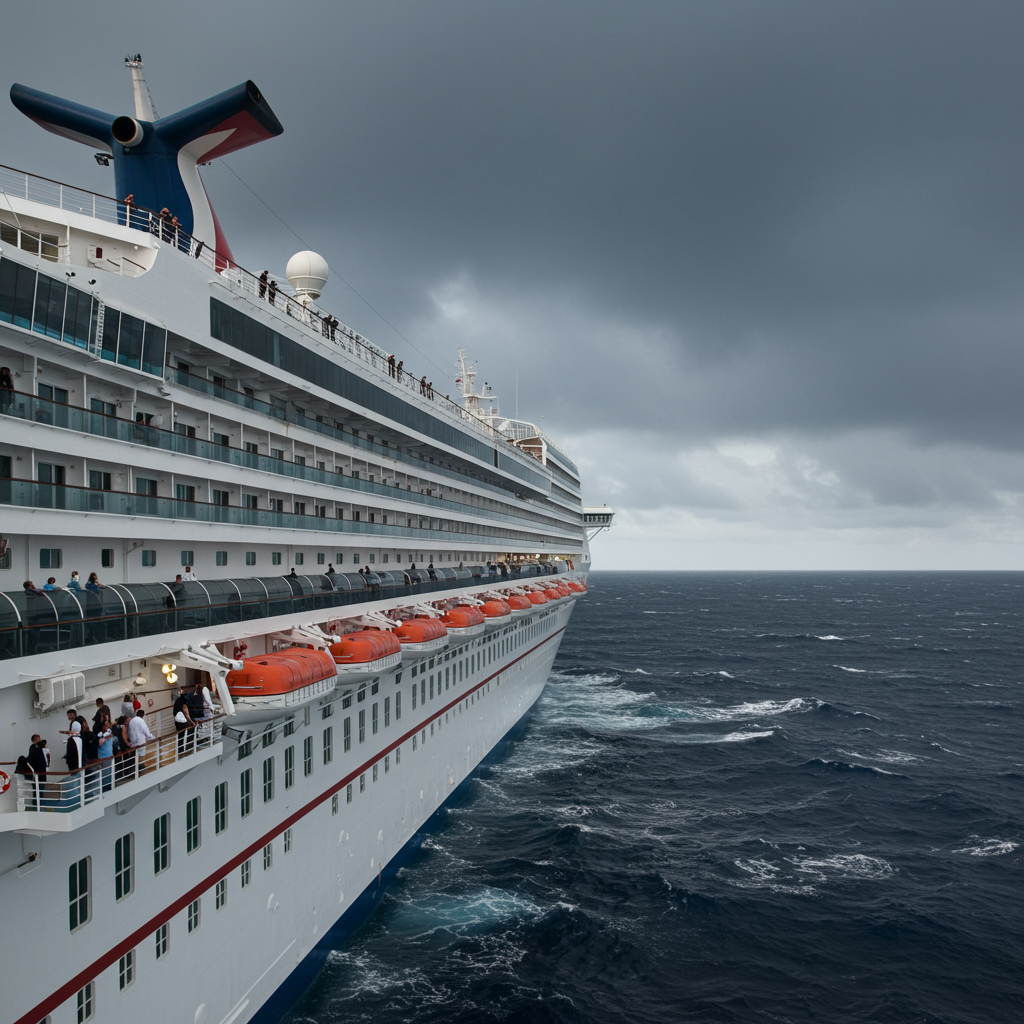Over a decade later, passengers and crew are revisiting the harrowing experience aboard the Carnival Triumph, a voyage infamously dubbed the “Poop Cruise.” A new episode of the Netflix docuseries Trainwreck, titled “Poop Cruise,” offers a vivid look back at the February 2013 sailing that turned a planned vacation into a five-day nightmare for thousands stranded at sea without essential services.
The disaster struck the Carnival Triumph, carrying over 4,000 passengers and crew, while on the final day of a four-day trip from Galveston, Texas, to Cozumel, Mexico. A fire erupted in the engine room, causing a complete loss of power throughout the ship. This blackout crippled everything from lights and air conditioning to refrigeration and, critically, the plumbing system, leaving toilets inoperable.
From Dream Vacation to Stranded Nightmare
Passengers recall being jolted awake by blaring alarms. Smoke seeped into various parts of the ship, adding to the growing panic. One passenger likened the terrifying scene to the sinking of the Titanic, while another described seeing flames shooting out from the ship’s distinctive red funnels. The cruise director recounted the chilling moment she realized the severity of the situation upon reaching the bridge amidst frantic calls and alarms.
With the ship adrift in the Gulf of Mexico, the loss of power meant stifling heat, darkness, and the rapid spoilage of perishable food. Conditions deteriorated quickly, but the most pressing issue became sanitation.
Desperate Measures: Bags and Buckets
Faced with thousands of non-working toilets, the crew was forced to implement drastic measures. Announcements directed passengers to use showers for liquid waste. For solid waste, red plastic bags were distributed, and passengers were instructed to “do a number two” in the bags and deposit them in bins placed in the corridors.
Passengers described the immediate and overwhelming impact on the ship’s hygiene. The smell of sewage and waste became pervasive. Hallways were soon lined with the overflowing red “poo bags.” With cabins becoming unbearable due to heat, many passengers created makeshift “tent cities” by sleeping out on the open decks. Food shortages led some to hoard non-perishable items as available supplies dwindled.
Order Breaks Down: Open Bar Chaos
In an attempt to boost morale while awaiting rescue, the crew decided to open the bars. However, this decision backfired spectacularly. Fueled by alcohol and frustration, the already desperate situation descended into further chaos. Passengers reportedly began urinating off the sides of the ship and even throwing the used waste bags onto lifeboats or other decks, sometimes hitting people below. Fights broke out, escalating the fear and prompting staff to quickly shut down the open bar.
A Turbulent Tow and Sewage Flood
Finally, after days adrift, tugboats arrived to tow the powerless vessel to Mobile, Alabama. Yet, the ordeal wasn’t over. The weather worsened, causing the ship to rock violently during the tow. This aggressive movement dislodged raw sewage trapped in the plumbing system, causing it to flood out onto the floors in corridors and public areas. Passengers described walking through ankle-deep sewage water, the sickening “squish” sound echoing through the ship.
The Aftermath and Carnival’s Response
After enduring five days of unsanitary and chaotic conditions, the Carnival Triumph finally docked in Mobile. Passengers disembarked, relieved to be back on solid ground. Following the incident, Carnival Cruise Line provided passengers with a full refund, covered transportation expenses, offered a $500 payment, and a free future cruise.
More than 12 years later, as highlighted in the documentary, Carnival has addressed the incident. A spokesperson for the cruise line stated that the Carnival Triumph event was a “teachable moment for the entire cruise industry.” They acknowledged a design vulnerability contributing to the fire’s impact and confirmed investing over $500 million across their fleet. These investments, according to Carnival, target comprehensive fire prevention and suppression, improved system redundancy, and enhanced management protocols, reinforcing their commitment to safety standards. The company emphasized their track record since 2013, having hosted over 53 million guests safely.
Beyond Mechanical Failures: Other Cruise Challenges
While the Carnival Triumph incident stemmed from a mechanical failure, the Trainwreck series touches on various forms of disruption that can occur at sea. Recent events underscore the diverse challenges cruise travel can face.
Passenger behavior can sometimes lead to chaotic situations, such as a massive brawl that erupted among passengers after disembarking a Carnival ship in Galveston in April 2024, resulting in 24 individuals being banned from the cruise line. Similarly, a large fight reportedly broke out on the dance floor of another Carnival ship in 2022.
Extreme weather can also pose significant risks. A recent Arctic cruise encountered severe conditions in the notorious Drake Passage, with passengers being tossed around by waves estimated at 30 to 40 feet. Tragically, a separate incident on a different vessel in the same region in 2022 saw a passenger killed by a rogue wave.
Even external security concerns can affect voyages. A Cunard ship recently informed passengers and implemented security measures, including dimming lights and closing decks, while passing through an area historically known for piracy threats, though the risk level has reportedly decreased significantly in recent years.
The Netflix “Poop Cruise” episode of Trainwreck, which premiered on June 24, serves as a stark reminder of how quickly a vacation at sea can turn into an unexpected ordeal, exploring the human impact of these unforeseen maritime challenges.



